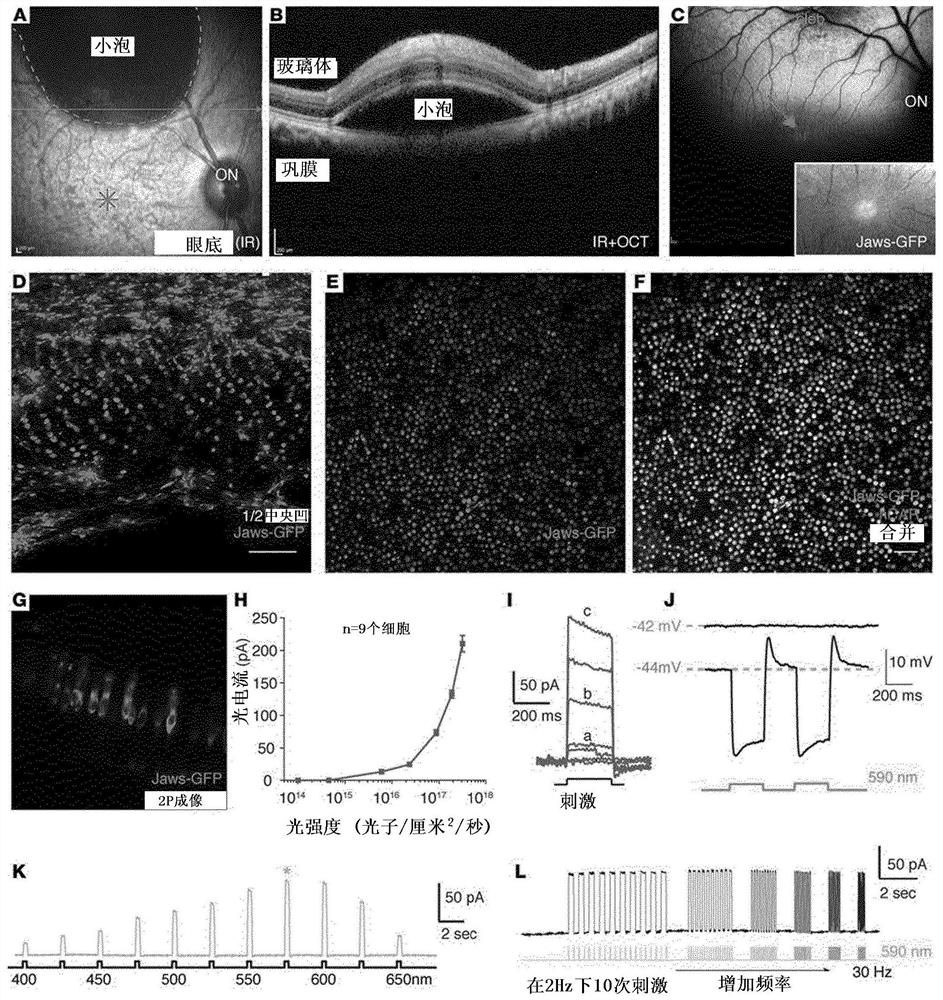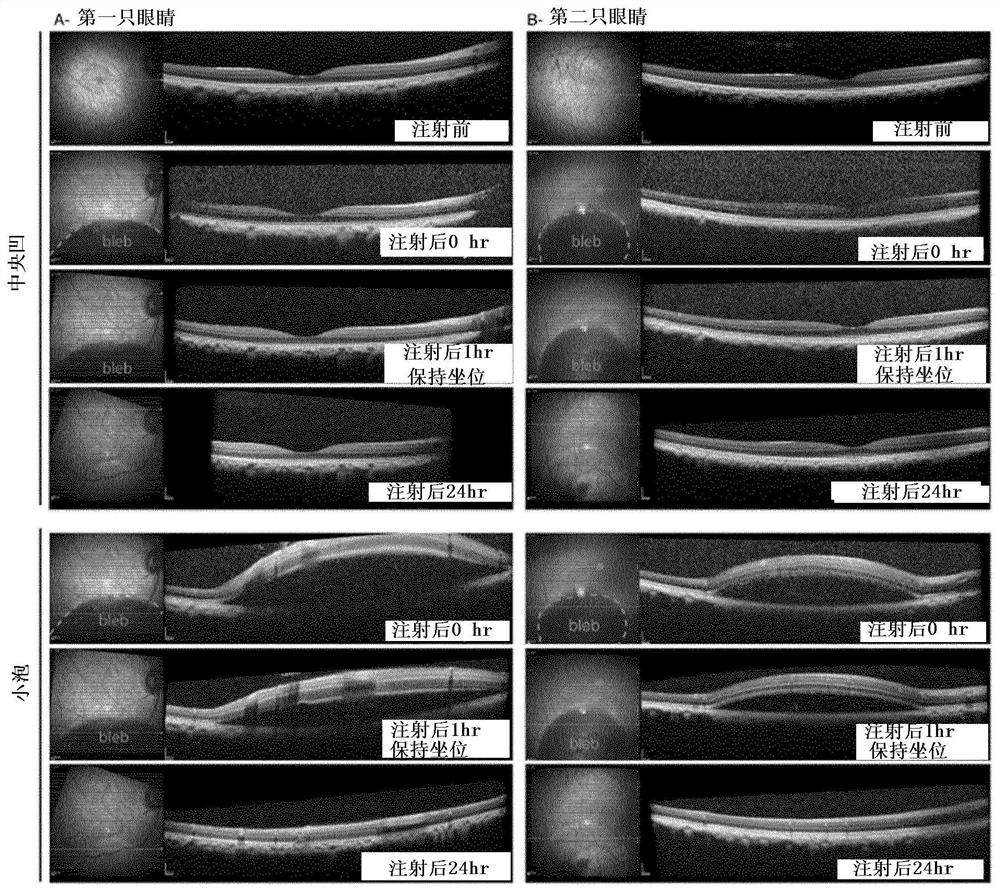Methods of expressing a polynucleotide of interest in the cone photoreceptors of a subject comprising the subretinal delivery of a therapeutically effective amount of a recombinant aav9-derived vector
A technology of AAV9 and polynucleotides, applied in the field of recombinant AAV9 derivative vectors, can solve problems such as loss of visual acuity
- Summary
- Abstract
- Description
- Claims
- Application Information
AI Technical Summary
Problems solved by technology
Method used
Image
Examples
Embodiment Construction
[0026] Gaps in our understanding of AAV transduction patterns within the anatomically unique environment of the subretinal space of the primate eye have hindered the establishment of noninvasive and efficient gene delivery to foveal cones in the clinic. Here, the inventors established several novel vector-promoter combinations to overcome limitations associated with AAV-mediated transduction of cones in the fovea, and demonstrated their use in mouse models, human induced pluripotent stem cell-derived Supporting studies were performed in organoids, human postmortem retinal explants, and live rhesus monkeys. They show that AAV9 variants, when injected into the subretinal space a few millimeters away from the fovea, provide efficient foveal cone transduction without detaching this vulnerable region. This mode of delivery relies on a cone-specific promoter and results in high-level transgene expression compatible with optogenetic vision restoration.
[0027] Therefore, the first ...
PUM
 Login to View More
Login to View More Abstract
Description
Claims
Application Information
 Login to View More
Login to View More - R&D
- Intellectual Property
- Life Sciences
- Materials
- Tech Scout
- Unparalleled Data Quality
- Higher Quality Content
- 60% Fewer Hallucinations
Browse by: Latest US Patents, China's latest patents, Technical Efficacy Thesaurus, Application Domain, Technology Topic, Popular Technical Reports.
© 2025 PatSnap. All rights reserved.Legal|Privacy policy|Modern Slavery Act Transparency Statement|Sitemap|About US| Contact US: help@patsnap.com



